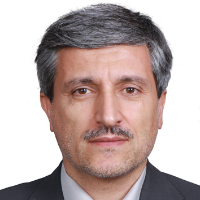Explanation the Role of Patterns of Complexity - Order in Geometry of Contemporary Architecture
Complexity and order, while having extensive concepts in themselves, create patterns in relation to each other that have been considered by various theorists in the field of architecture, behavioral sciences, and aesthetics in recent centuries. With the influence of new scientific and philosophical theories on architecture, attitudes toward order have changed and the role of complexity in explaining relationships and processes has increased more. This research was qualitative type and is analyzed by descriptive-analytical method, information obtained from library studies and documentary sources, and then evaluated by Grounded theory method based on the concept of complexity and order in architecture. With explaining the relationship between order and complexity, three patterns of ordered complex, disordered complex and organized complex found in Geometry of architecture can be examined: 1- In this view, the universe and phenomena have order, and order has levels. Order extends from simplicity to complexity. The pattern that can be suggested of complexity and order is the ordered complex. 2- Order is mental and has no external existence. Everything is in the disorder and chaos, and the order is the particular moment of this disorder. In relation to complexity, complexity is versus order and is sometimes equated with disorder. 3- Order and disorder are together and in one whole dynamically and interact with each other. In every order, there is disorder, and every disorder is accompanied by order. This view is the organized complex pattern. These patterns can provide theoretical insights into the process and product of architecture.
-
DURABILITY AND DYNAMISM OF CULTURAL IDENTITY IN RECENT RESIDENTIAL COMPLEXES (CASE STUDY: KERMANSHAH RESIDENTIAL COMPLEXES FROM 1980)
Moein Aghaeimehr, Gharehbaglou Minoo *, Mohammadtaghi Pirbabaei
HOnar - ha - ye - ziba Memari - va - shahrsazi, -
Types of Change in Forming the Architectural Built Space (Case study: Faculty of Architecture and Urban Planning, Tabriz Islamic Art University)
Ahmad Mirahmadi *, Minou Gharehbaglou, Mohammadtaghi Pirbabaei
Architectural Thought,



